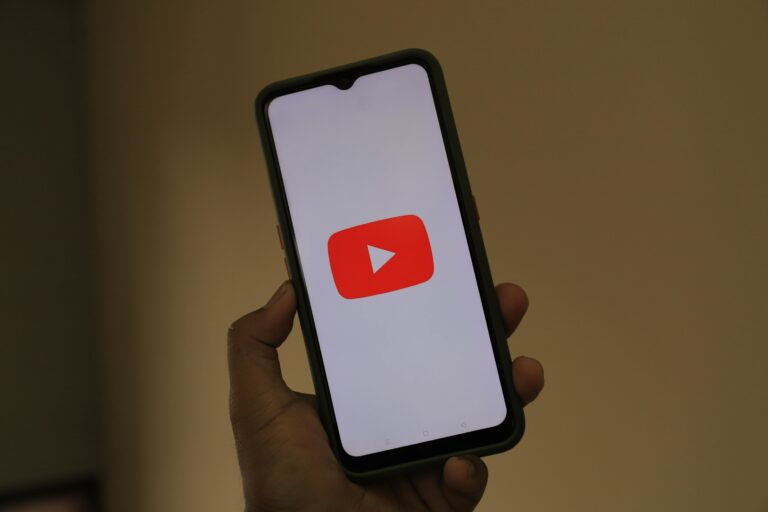AI-Powered Marketing Automation and Lead Nurturing for Dubai Businesses: Advanced Machine Learning Strategies for Multi-Touch Attribution and Sales Funnel Optimization in 2025
The invisible conversion killer plaguing Dubai’s digital landscape
Picture this: a potential customer discovers your Dubai business through a Google search, visits your website from their phone during lunch, checks your Instagram that evening, receives your email newsletter the next day, and finally makes a purchase through your Facebook ad a week later. Which touchpoint deserves credit for the sale? Traditional marketing measurement fails catastrophically at answering this question, leaving Dubai businesses blind to their most profitable customer pathways.
While competitors throw money at disconnected campaigns and wonder why their ROI remains elusive, forward-thinking Dubai businesses are embracing AI-powered marketing automation that tracks every customer interaction, predicts buying behavior, and optimizes sales funnels in real-time. The difference between guessing and knowing your customer journey has never been more critical—or more profitable.
This comprehensive guide reveals how machine learning transforms marketing automation from a basic email tool into an intelligent revenue engine that understands, predicts, and optimizes every customer touchpoint across Dubai’s competitive digital marketplace.
When traditional attribution becomes your silent profit drain
Dubai’s digital ecosystem presents unique challenges that expose the fundamental flaws in traditional attribution models. The average UAE consumer interacts with brands across 15+ touchpoints before converting, spanning multiple devices, platforms, and time zones that cater to Dubai’s international business community.
Traditional last-click attribution assigns 100% credit to the final interaction before purchase, completely ignoring the awareness-building power of earlier touchpoints. First-click attribution does the opposite, crediting only the initial discovery moment. Both approaches create dangerous blind spots that drain marketing budgets and misdirect strategic decisions.

This Photo was taken by ThisIsEngineering.
Consider Majid Al Futtaim’s digital transformation journey. Before implementing AI-driven attribution, their marketing team assumed their Google Ads generated the highest ROI because they captured the most last-click conversions. Advanced multi-touch attribution revealed that LinkedIn campaigns and organic content actually initiated 67% of high-value customer journeys, while Google Ads primarily captured demand that other channels created.
This revelation shifted their budget allocation and increased overall conversion rates by 43% within six months. The lesson? Traditional attribution models don’t just provide incomplete data—they actively mislead strategic decisions and waste marketing investment.
The multi-device complexity multiplier
Dubai’s tech-savvy population averages 4.2 connected devices per person, creating intricate cross-device customer journeys that traditional tracking cannot follow. A typical B2B purchase might begin with mobile research during a Dubai Metro commute, continue with desktop investigation at the office, involve tablet comparison shopping at home, and conclude with a mobile purchase during the next day’s commute.
Without AI-powered cross-device tracking and identity resolution, each device interaction appears as a separate customer in your analytics. This fragmentation makes it impossible to understand true customer behavior, optimize touchpoint sequences, or calculate accurate lifetime value. Your marketing automation operates blind to the actual customer experience.
Machine learning transforms attribution from guesswork to precision
Advanced machine learning algorithms excel at pattern recognition across massive, complex datasets—exactly what multi-touch attribution requires. Instead of applying rigid rules like “give 40% credit to first-click and 60% to last-click,” AI analyzes millions of customer journey variations to understand which touchpoint combinations actually drive conversions.
Algorithmic attribution uses predictive modeling to assign credit based on each touchpoint’s demonstrated influence on purchase probability. If data shows that customers who engage with your Instagram content and then visit your pricing page have an 85% higher conversion rate than those who only visit the pricing page, the algorithm dynamically adjusts attribution to reflect Instagram’s true contribution value.
Real-time optimization capabilities
Traditional attribution provides historical insights that help you understand what happened weeks or months ago. AI-powered systems deliver real-time attribution intelligence that enables immediate optimization decisions. When the algorithm detects that email newsletter subscribers who view specific product videos convert at 3x the rate of other subscribers, it can automatically trigger personalized video recommendations within hours.
| Attribution Method | Data Processing Time | Cross-Device Tracking | Predictive Capability | Optimization Speed |
|---|---|---|---|---|
| Last-Click Traditional | 24-48 hours | Limited | None | Weekly/Monthly |
| First-Click Traditional | 24-48 hours | Limited | None | Weekly/Monthly |
| Linear Multi-Touch | 12-24 hours | Basic | None | Weekly |
| AI Algorithmic | Real-time to 2 hours | Advanced | Predictive scoring | Real-time |
This real-time intelligence becomes particularly powerful when integrated with AI-powered predictive analytics and customer journey mapping, creating a comprehensive understanding of how customers move through your sales funnel and where optimization opportunities exist.
Advanced lead nurturing through behavioral prediction models
Traditional lead nurturing follows predetermined sequences: send welcome email, wait three days, send case study, wait one week, send demo offer. This approach treats all leads identically, ignoring the reality that different prospects have vastly different needs, timelines, and decision-making processes.
AI-powered lead nurturing analyzes hundreds of behavioral signals to predict each prospect’s likelihood to convert, optimal communication frequency, preferred content types, and ideal timing for sales outreach. Machine learning algorithms identify subtle patterns that human marketers miss, such as the correlation between specific website page dwell times and purchase intent, or how email open rates on certain days predict demo request probability.

This Photo was taken by Erik Mclean.
Dynamic content personalization at scale
Emirates NBD’s digital banking division implemented AI-driven lead nurturing that analyzes over 200 behavioral and demographic variables to personalize content for each prospect. Instead of generic financial services emails, their system automatically selects content based on predicted interests: startup founders receive entrepreneurship-focused content, established business owners get growth financing information, and individual professionals see personal wealth management materials.
The results speak volumes: email engagement rates increased 156%, demo requests rose 89%, and the average time from lead to customer decreased from 45 days to 23 days. More importantly, customer lifetime value for AI-nurtured leads averaged 34% higher than traditionally nurtured prospects, indicating better qualification and fit.
Predictive lead scoring evolution
Traditional lead scoring assigns points based on demographics and basic actions: +10 points for downloading a whitepaper, +5 points for visiting the pricing page, +15 points if they’re a C-level executive. These static models quickly become outdated and fail to account for behavioral nuances.
Machine learning lead scoring analyzes the complete digital footprint of converted customers to identify the behavioral patterns that predict purchase intent. The algorithm might discover that prospects who visit your case studies page, then check your team bios, and finally browse job openings have an 87% conversion rate—even if they never download content or visit pricing pages.





